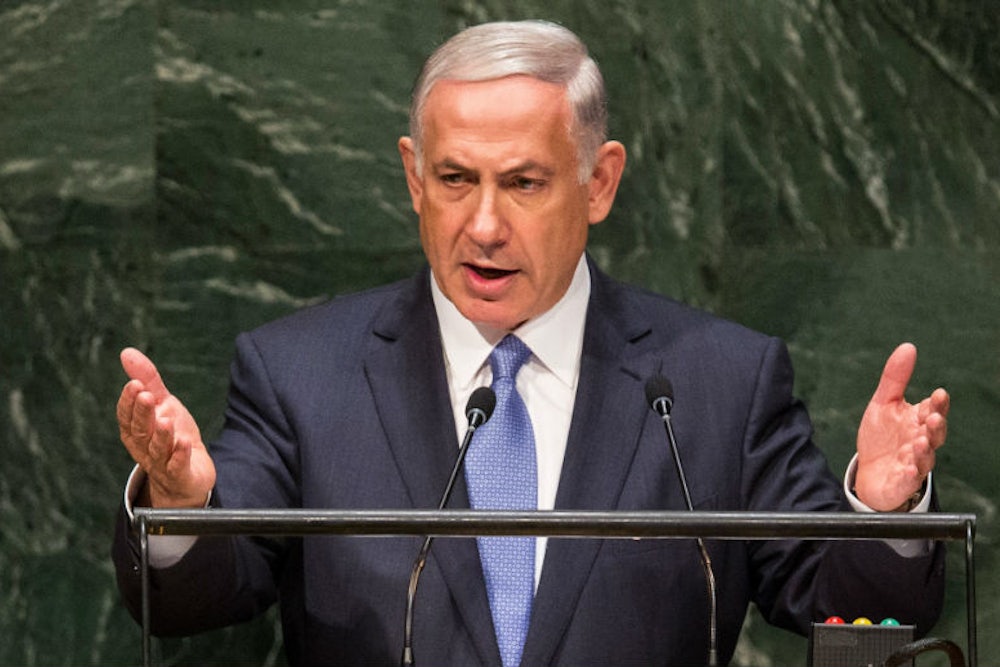Before ISIS militants routed the Iraqi army, observers of the Israeli-Palestinian conflict could pretend all was business as usual. Even during this summer’s bloody war in Gaza, it was possible to imagine that a peace agreement might not be so distant. Israel and the Palestinian Authority were momentarily united in their criticism of Hamas and their need to offer a credible alternative. And more importantly, as had been the case for decades, the basic interests of the two sides were overlapping: the creation of a Palestinian state was a strategic necessity for both Israelis and Palestinians. All that was required was the right mix of leadership, creativity and flexibility. Mourning and distrust might impair negotiations for a time, but surely the underlying convergence of interests would reemerge. Now, however, even that hope is near dead, the latest casualty of regional chaos and the brutality of the Islamic State.
In some ways, ISIS has returned us to a previous reality. Decades ago, the fundamental conditions for an Israeli-Palestinian rapprochement were absent. The Arab world was committed to non-negotiation and non-recognition of Israel. Israelis, for their part, had learned from a series of Arab invasions that it needed territorial depth. On multiple occasions, only astonishing luck had kept Egyptian tanks and Jordanian legionnaires from seizing Tel Aviv. The tiny country needed room to maneuver, a space between itself and its enemies. So the response to invasion was the creation of buffer zones: from Egypt, the Sinai; from Syria, the Golan Heights; from Jordan, the West Bank; from Lebanon, the area South of the Litani River. Depth was a strategic necessity, and talk of territorial concessions was a joke.
But slowly the strategic calculus changed. The 1979 Egyptian-Israeli peace treaty made Arab recognition of Israel thinkable. Equally important, it offered Israel a strategic alternative to territorial depth. Peace for the citizens of Tel Aviv and Jerusalem might be ensured by treaty instead of distance. Tanks might not need to be stopped in the desert, because they might never leave Cairo. This was a revolution, and it allowed even realists to dream of the creation of a peaceful Arab Palestine nestled alongside Israel. In recent years, as Palestinian leadership (at least officially) reconciled itself to Israel’s existence, and Israelis have realized the staggering costs (moral, no less than financial) of military occupation, this dream seemed tantalizingly close. Interests had aligned. There were still gaps—on precise borders, on Jerusalem, on security arrangements—but these seemed bridgeable with enough creativity, enough effort, and the right kind of leaders.
But now, those fundamentals are askew once again. Israel sees a region in flames and a proliferation of terrorist groups. As governments fall and brutal militants seize territory all around them, the guarantee of a paper treaty seems scant protection. Who knows what government will even be there tomorrow? What good is a treaty when terrorists with rocket launchers control territory mere miles from your cities? In his speech at the United Nations just a few days ago, this was Israeli Prime Minister Benjamin Netanyahu’s central theme: “States are disintegrating. Militant Islamists are filling the void. Israel cannot have territories from which it withdraws taken over by Islamic militants yet again, as happened in Gaza and Lebanon. That would place the likes of ISIS within mortar range – a few miles – or 80 percent of our population.” These are not the words of a man prepared for imminent and far-reaching territorial concessions. Netanyahu has long had something of a pre-Egyptian treaty strategic mindset. Now, with al-Nusra and Hezbollah sitting on Israel’s northern border, Hamas in Gaza and most frighteningly, an unstable Jordan threatened by ISIS to the East, who really can blame him?
Wednesday, the chasm became acutely obvious. In a meeting with President Obama at the White House, Netanyahu reiterated his commitment to creating a Palestinian state, but insisted that statehood be predicated on “rock solid security arrangements on the ground.” This is not a minor aside, but a major caveat, an oblique insistence on an ongoing Israeli military presence along the Jordanian border to guarantee safety from the East. But after a bloody summer, Palestinians are in no mood for caveats, transitional periods and an ongoing military presence. Even as Netanyahu arrived at the White House, Palestinian diplomats were busy circulating a draft resolution to the U.N. Security Council. The draft not only demands that Israel cede the entire West Bank, but also conclude a complete withdrawal by 2016. There is no mention of Israeli “security arrangements.”
When we finally catalogue the full list of tragedies for which ISIS is responsible, the death of any prospective Israeli-Palestinian peace deal will, I imagine, be near the bottom of the list. In the face of the brutality and destruction ISIS has unleashed, analyzing the secondary ripple effects of the group’s rise seems almost petty. And to be fair, even the supposedly small, bridgeable gaps between Israel and Palestine that predated ISIS have proved too much for the current pair of untrusting and intransigent leaders. But we should not underestimate the scale of the shift that regional instability has triggered. Israelis and Palestinians are no longer bickering over the last 5-10 percent of contested territory, but separated by a gulf of basic interests. We can no longer blame the breakdown of the peace process on failures of leadership, effort, and creativity. Fundamental differences are moving the parties in opposite directions. Until some modicum of stability returns to the surrounding region, we can hope for nothing more than interim measures and baby steps. And a great deal of frustration.
